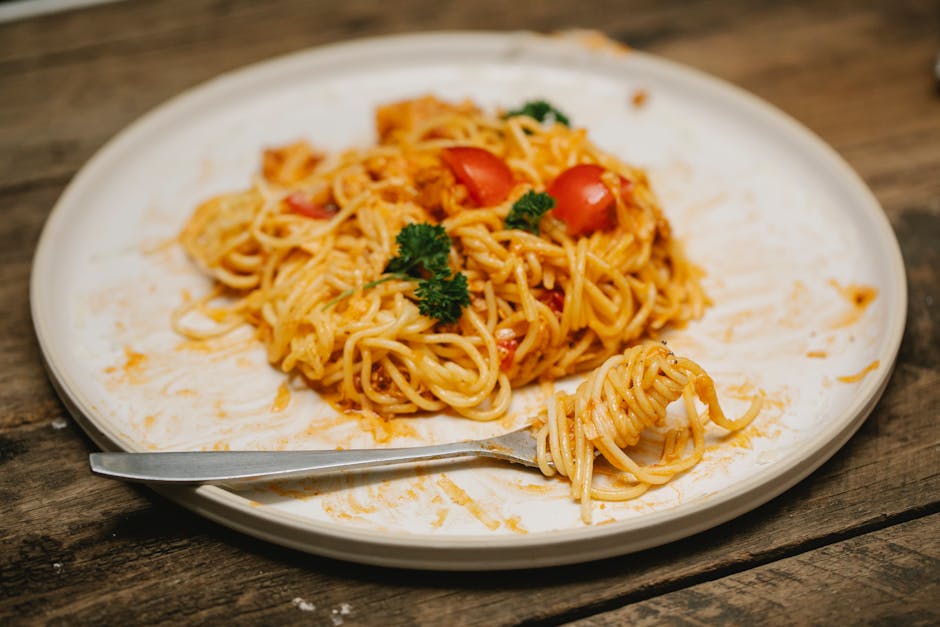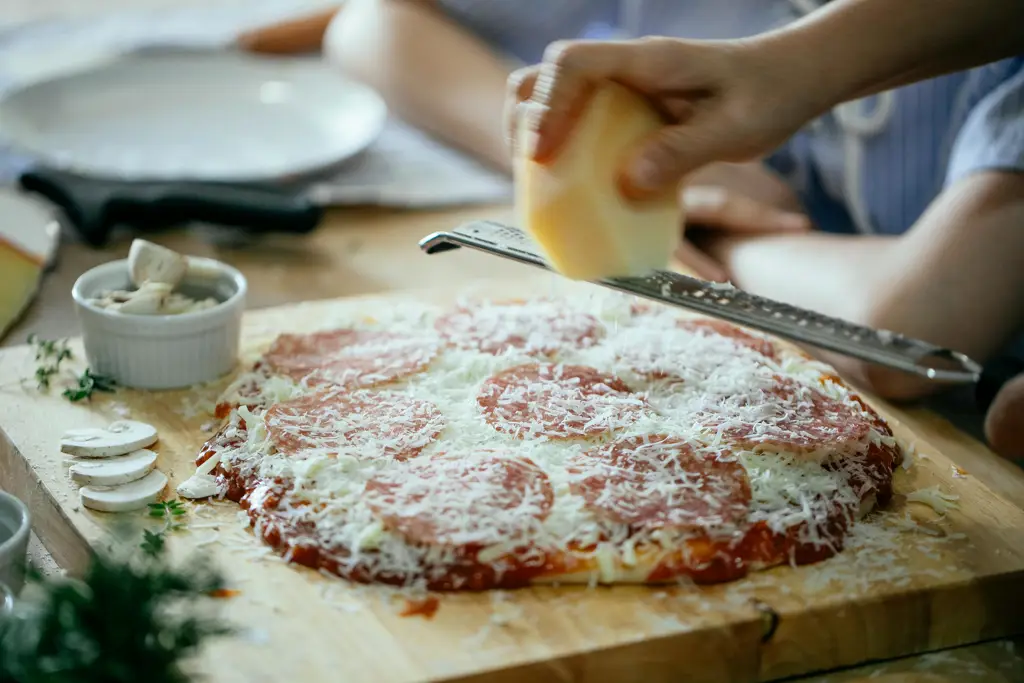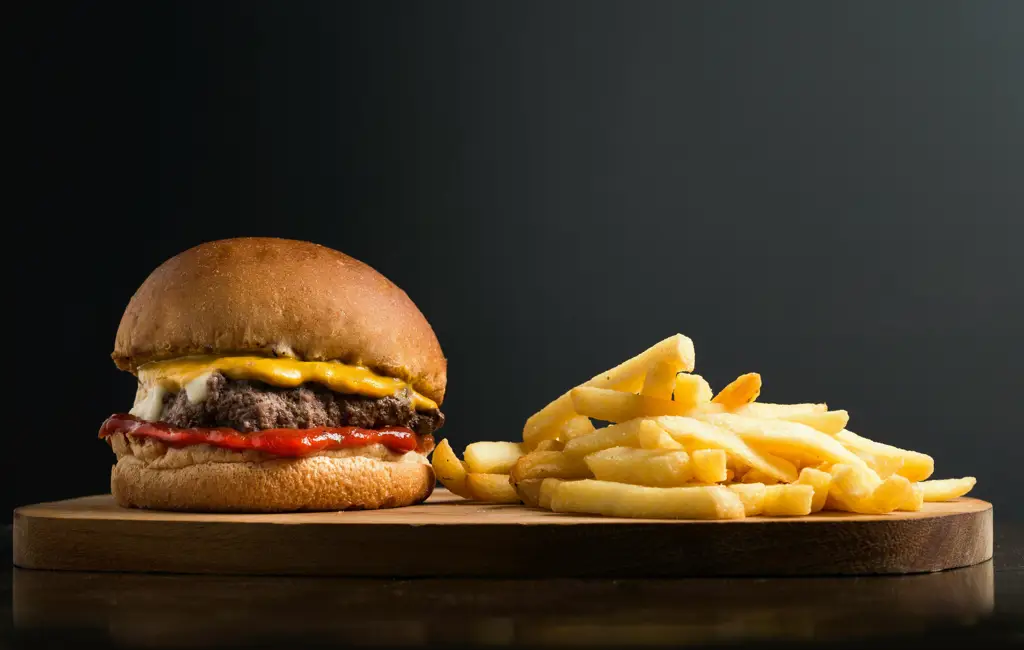Indulge in the rich history and unparalleled flavor of Panettone, the iconic Italian sweet bread that has captivated palates for centuries. Originating in Milan, Italy, its story is as captivating as its taste. While the exact origins are shrouded in some mystery, the most popular legend dates back to the 15th century, involving a nobleman’s cook, Toni, who accidentally created the sweet bread during a Christmas feast, rescuing a disastrous dessert attempt. His creation, initially named Toni’s bread, eventually evolved into the beloved Panettone we know today.
Panettone’s rise to fame wasn’t instantaneous. It gradually gained popularity throughout Italy, slowly becoming a cherished Christmas tradition. Its unique texture – a light and airy crumb with candied fruit and raisins – sets it apart from other sweet breads. The meticulous process of making Panettone involves a long, slow fermentation, contributing to its characteristic soft and moist texture. This lengthy process, often lasting several days, is a testament to the dedication and craftsmanship involved in its production. Today, Italy produces millions of Panettone loaves annually, with exports reaching a global market eager to experience this culinary treasure.
Beyond its delicious taste, Panettone holds significant cultural importance in Italy. It’s an integral part of the traditional Christmas feast, often shared with family and friends as a symbol of unity, prosperity, and good fortune. The sharing of Panettone extends beyond the immediate family; it’s a common gift given during the holiday season, further strengthening its connection to Italian culture and generosity. Its presence on Christmas tables is as ubiquitous as the Christmas tree, solidifying its position as a beloved and essential part of the Italian holiday experience.
Interestingly, the ingredients themselves tell a story. The candied fruit, typically citron, orange, and raisins, represent the abundance and richness associated with the festive season. The high proportion of butter and eggs in the recipe contributes to the bread’s luxurious texture and decadent flavor, making it a truly special treat. Furthermore, the variations in ingredients and preparation methods across different regions of Italy showcase the diversity and adaptability of this classic recipe, with some bakers incorporating chocolate chips or other unique additions to their creations. The evolution of Panettone demonstrates its enduring appeal and its ability to adapt while maintaining its core identity.
Ingredients and Measurements
Creating a truly delicious Italian Panettone requires precise measurements and high-quality ingredients. The success of this recipe hinges on the careful balance of flavors and the proper hydration of the dough. Don’t be tempted to substitute ingredients, as each plays a vital role in the final texture and taste.
For the Sponge (Biga):
- 100g (3.5 oz) strong bread flour (at least 12% protein): Using strong flour is crucial for the development of gluten, which gives the Panettone its characteristic airy texture.
- 60g (2.1 oz) lukewarm water (around 30-35°C): The water temperature is important. Too hot will kill the yeast, too cold will hinder its activity.
- 2g (1 tsp) fresh yeast, or 1g (½ tsp) active dry yeast: Fresh yeast provides a superior flavor, but active dry yeast works well too. If using active dry yeast, ensure it’s properly activated before adding it to the flour.
For the Dough:
- 400g (14 oz) strong bread flour (same as above): Ensure you use the same type of flour for consistency.
- 100g (3.5 oz) caster sugar: Granulated sugar works just as well, but caster sugar dissolves more easily.
- 8g (2 tsp) fine sea salt: Don’t skip the salt! It balances the sweetness and enhances the flavor.
- 100g (3.5 oz) unsalted butter, softened: Softened butter is essential for easy incorporation into the dough. Avoid melted butter.
- 3 large eggs, at room temperature: Room temperature eggs emulsify better with the other ingredients.
- 1 teaspoon vanilla extract: Enhances the overall flavor profile of the panettone.
- Zest of 1 orange and 1 lemon (optional): Adds a lovely citrusy aroma and flavor. Use organic citrus if possible to avoid pesticide residue.
- 100g (3.5 oz) candied fruits (mixed peel and cherries): Choose high-quality candied fruits for the best results. You can adjust the quantity to your preference.
- 100g (3.5 oz) raisins (optional): Soaked raisins add moisture and sweetness. Soak them in rum or orange juice for a few hours before adding to the dough for enhanced flavor.
For the Glaze (optional):
- 1 egg yolk, lightly beaten:
- 1 tablespoon of milk:
- Pearl sugar (for sprinkling): This adds a beautiful sparkle and extra sweetness.
Important Notes: All measurements are in grams (g) and ounces (oz) unless otherwise stated. Using a kitchen scale is highly recommended for accurate measurements, especially for baking. Accurate measurements are crucial for achieving the desired texture and rise of the Panettone.
Professional Recommendation: Weigh your ingredients for the most accurate results. This ensures consistent baking and a perfect Panettone every time. Don’t rush the process; allow ample time for each stage of the recipe.
Equipment List
Baking the perfect Panettone requires the right tools. This list details the essential equipment, along with recommendations for optimal results. Investing in quality equipment will significantly improve your baking experience and the final product’s quality.
Mixing Bowls: You’ll need at least three mixing bowls of varying sizes. A large bowl (approximately 8-10 quart capacity) is crucial for the initial mixing of the dough. A medium-sized bowl (around 4-6 quart) is useful for preparing the ingredients separately, and a small bowl (around 2-quart) for tasks like whisking egg yolks or proofing yeast.
Measuring Cups and Spoons: Accurate measurements are paramount in baking. Invest in a set of both metric and imperial measuring cups and spoons to ensure precision. Using a kitchen scale is highly recommended for weighing ingredients, particularly the flour, as this yields the most consistent results. A digital kitchen scale with gram and ounce readings is ideal.
Whisk: A balloon whisk is perfect for whipping the eggs and incorporating air into the batter. A sturdy whisk is important to avoid bending or breaking during vigorous whisking.
Wooden Spoon or Spatula: A sturdy wooden spoon or a flexible silicone spatula is essential for folding the ingredients together gently during the mixing process. Avoid using metal utensils as they can damage the delicate texture of the dough.
Stand Mixer (Optional but Highly Recommended): While a hand mixer can be used, a stand mixer with a dough hook attachment makes the process significantly easier, especially when dealing with the thick and sticky Panettone dough. A stand mixer allows for consistent mixing and reduces the strain on your arms. If using a stand mixer, ensure it has a minimum of 5-quart capacity to accommodate the dough properly.
Proofing Bowls: You’ll need at least two appropriately sized bowls for the first (bulk) and second (final) proofing stages. These bowls should be large enough to allow the dough to rise without being cramped. Consider using bowls with slightly curved sides to prevent the dough from sticking.
Baking Pan: Traditional Panettone molds are available in various sizes, usually ranging from 1kg (2.2lbs) to 2kg (4.4lbs). Choose a mold that is properly sized for your recipe. Alternatively, you can use a standard loaf pan lined with parchment paper, but the traditional mold helps create the characteristic dome shape.
Parchment Paper: Lining the Panettone mold with parchment paper prevents sticking and makes it easier to remove the baked Panettone. Cut a circle of parchment paper slightly larger than the base of your mold.
Pastry Brush: A pastry brush is useful for brushing the egg wash onto the Panettone before baking, giving it a beautiful golden-brown crust.
Oven Thermometer: An oven thermometer is highly recommended to ensure your oven is accurately calibrated to the temperature specified in the recipe. Oven temperatures can vary significantly, and an accurate temperature is crucial for proper baking.
Instructions (Mixing, Proofing, Baking)
Making a truly delicious Italian Panettone requires patience and attention to detail. The following instructions will guide you through the mixing, proofing, and baking process. Accuracy in measuring ingredients is crucial for achieving the optimal texture and rise. Use a kitchen scale for the most precise measurements.
Mixing Stage: Begin by activating the yeast. In a large bowl, combine 1 cup (240ml) of lukewarm milk (around 105-115°F/40-46°C), 1 teaspoon of sugar, and 2 teaspoons of active dry yeast. Gently stir and let stand for 5-10 minutes until foamy. This indicates the yeast is alive and active. If it doesn’t foam, your yeast may be old and you’ll need to start again with fresh yeast.
In a separate large bowl, whisk together 4 large eggs and 1 cup (200g) of granulated sugar until pale and slightly thickened. Gradually add the activated yeast mixture to the egg mixture, whisking gently to combine. Do not overmix at this stage.
In a separate bowl, whisk together 4 cups (500g) of strong bread flour, 1 teaspoon of salt, and the zest of 1 orange and 1 lemon. Gradually add the dry ingredients to the wet ingredients, mixing with a wooden spoon or a stand mixer fitted with a dough hook on low speed. Avoid adding all the flour at once; add it gradually, incorporating it fully before adding more. The dough will be quite sticky initially.
Once the dry ingredients are incorporated, increase the speed of the mixer to medium and knead for 8-10 minutes until the dough is smooth and elastic. If using a stand mixer, you may need to scrape down the sides of the bowl a few times. If kneading by hand, this will require considerable effort and time.
First Proof (Bulk Fermentation): Lightly grease a large bowl with olive oil. Place the dough in the bowl, turning to coat it with oil. Cover the bowl with plastic wrap and let the dough rise in a warm place (around 75-80°F/24-27°C) for approximately 2-3 hours, or until doubled in size. Avoid drafts and temperature fluctuations.
Second Proof (in the Panettone Mold): Gently deflate the dough. Add 1/2 cup (100g) of candied fruit (your choice of mix) and 1/4 cup (50g) of raisins (or other dried fruit). Gently fold the fruit into the dough. Grease and flour a 4-cup (1-liter) Panettone mold. Place the dough into the mold, filling it about halfway. Cover with plastic wrap and let rise in a warm place for another 2-3 hours, or until the dough almost reaches the top of the mold. The dough should be puffy and spring back slowly when gently poked.
Baking: Preheat your oven to 350°F (175°C). Bake the Panettone for 45-60 minutes, or until a wooden skewer inserted into the center comes out clean. If the top starts to brown too quickly, cover it loosely with foil.
Once baked, carefully remove the Panettone from the oven and let it cool completely in the mold before inverting it onto a wire rack. This allows the Panettone to retain its shape. Once completely cool, store it in an airtight container at room temperature for up to a week, or freeze for longer storage.
Baking Time and Temperature
Achieving the perfect panettone requires careful attention to baking time and temperature. Getting this right is crucial for achieving a beautifully risen, moist crumb, and a deeply golden crust. The exact timing will depend on several factors, including your oven’s accuracy, the size of your panettone mold (typically 1 kg or 1.5 kg), and the specific recipe you are using. However, the following guidelines provide a solid starting point for baking your delicious Italian panettone.
Oven Temperature: We recommend preheating your oven to 350°F (175°C) for a 1 kg mold and 340°F (170°C) for a 1.5 kg mold. This lower temperature for larger panettoni prevents the outside from browning too quickly before the inside is fully baked. Using an oven thermometer is highly recommended to ensure accuracy, as oven temperatures can vary significantly.
Baking Time: Baking time typically ranges from 60-75 minutes for a 1 kg panettone and 75-90 minutes for a 1.5 kg panettone. However, this is just an estimate. You should rely on visual cues and a reliable internal temperature check to determine doneness.
Visual Cues: As your panettone bakes, look for a deep golden-brown crust. The panettone should rise significantly during baking, achieving a dome-like shape. The top should spring back slightly when gently pressed. Don’t solely rely on these cues, however, as under-baking is more common than over-baking.
Internal Temperature Check: The most accurate way to determine doneness is by using a food thermometer. Insert the thermometer into the thickest part of the panettone, avoiding the metal mold. The internal temperature should reach 190-200°F (88-93°C) for a perfectly baked panettone. If the temperature is lower, continue baking in 5-minute increments, checking the temperature each time. Over-baking will result in a dry crumb.
Important Considerations:
- Oven Placement: Place your panettone in the center of the oven for even baking. Avoid placing it near the heating elements.
- Steam: For an exceptionally soft crumb and a beautiful crust, consider creating a steamy environment during the first 20-30 minutes of baking. You can achieve this by placing a baking sheet filled with hot water in the bottom of the oven. Caution: Be careful when adding water to a hot oven.
- Cooling: Once baked, let the panettone cool completely in the mold upside down for at least 3 hours. This prevents the panettone from collapsing. After cooling, remove it from the mold and let it cool completely on a wire rack before storing.
Troubleshooting:
- If your panettone is browning too quickly: Reduce the oven temperature by 10-15°F (5-8°C) and tent the top loosely with aluminum foil.
- If your panettone is not rising sufficiently: Ensure your yeast is fresh and active, and that you followed the recipe instructions carefully. Check your oven’s temperature accuracy.
By carefully monitoring the baking process and following these guidelines, you’ll be well on your way to baking a magnificent, delicious Italian panettone to be proud of!
Cooling and Storage of Your Delicious Italian Panettone
Once your magnificent panettone has finished baking and is gloriously golden-brown, the cooling and storage process is crucial to preserving its delicate texture and flavour. Improper handling can lead to a stale, dry loaf, diminishing the enjoyment of this festive treat. Therefore, careful attention to these steps is paramount.
Cooling the Panettone: Allow the panettone to cool completely within its baking tin for at least 2-3 hours. This allows the internal structure to set and prevents the loaf from collapsing. Resist the temptation to remove it prematurely; patience is key to a perfect result. The panettone should feel firm to the touch and no longer warm in the centre.
Removing from the Tin: After cooling, gently run a thin, flexible knife or offset spatula around the edges of the panettone to loosen it from the sides of the tin. Invert the tin onto a wire rack, allowing the panettone to fall out. If it sticks, gently tap the bottom of the tin. Avoid forcing it, as this could damage the delicate structure. Never attempt to remove it while still warm.
Ideal Storage for Short-Term Enjoyment (within 1 week): For optimal freshness within the first week, store your panettone in a cool, dry place at room temperature (ideally between 15-20°C or 59-68°F). A paper bag or a loosely closed container is ideal. This prevents it from drying out while still allowing for some air circulation. Avoid airtight containers, as they can trap moisture and promote mould growth.
Longer-Term Storage (up to 2 months): For longer storage, wrapping is key. Wrap the cooled panettone tightly in plastic wrap, ensuring no air pockets remain. Then, place it in an airtight freezer bag, removing as much air as possible before sealing. Freezing your panettone preserves its quality remarkably well. When ready to enjoy, thaw it slowly at room temperature for several hours, or overnight in the refrigerator. Microwaving or rapid thawing is not recommended as it can affect the texture.
Professional Recommendation: Consider slicing your panettone before freezing. This allows you to remove only the desired amount, preventing repeated freezing and thawing cycles which can degrade the quality. Individual slices can be wrapped separately and frozen, providing easy access to delicious portions whenever the craving strikes.
Reviving Stale Panettone: If your panettone does become slightly stale, don’t despair! You can often revive it by lightly sprinkling the surface with water and then wrapping it tightly in foil. Place it in a preheated oven at 150°C (300°F) for 5-10 minutes. The warmth and moisture will help to soften it and restore some of its original texture. Monitor carefully to prevent burning.
By following these guidelines, you can ensure your delicious Italian panettone remains a delightful treat for weeks or even months, preserving its exquisite flavour and texture for a truly memorable experience.
Glazing and Decoration (Optional)
While a perfectly baked Panettone is delicious on its own, a beautiful glaze and some festive decorations can elevate it to a truly stunning centerpiece. This section offers several options for glazing and decorating your Panettone, allowing you to personalize it to your liking.
Simple Sugar Glaze: This classic glaze is easy to make and provides a beautiful, subtle sweetness. Combine 1 cup of powdered sugar with 2-4 tablespoons of milk or lemon juice, whisking until smooth and pourable. The consistency should be like thick cream. Adjust the liquid gradually to achieve the desired thickness. Once your Panettone has completely cooled, drizzle the glaze evenly over the top. You can also add a pinch of vanilla extract for extra flavor.
Citrus Glaze: For a zestier glaze, add the zest of one orange or lemon to the simple sugar glaze recipe above. Ensure the zest is finely grated to avoid large pieces in the glaze. The citrus zest adds a bright, refreshing flavor and aroma that complements the Panettone beautifully. You can also use a combination of orange and lemon zest for a more complex flavor profile.
Chocolate Glaze: A rich chocolate glaze is a decadent and indulgent option. Melt 4 ounces of high-quality dark, milk, or white chocolate (or a combination) in a double boiler or microwave in 30-second intervals, stirring until smooth. Be careful not to overheat the chocolate, as this can cause it to seize. Once melted and smooth, drizzle the glaze over the cooled Panettone. You can also add a pinch of sea salt for a sophisticated touch.
Decorations: Once your glaze has set, you can add various decorations to further enhance your Panettone. Consider using:
- Candied fruits: Small pieces of candied orange, lemon, or citron peel add a beautiful pop of color and a delightful chewy texture.
- Sliced almonds: Toasted sliced almonds provide a pleasing crunch and a nutty flavor.
- Edible glitter: A sprinkle of edible glitter adds a touch of sparkle and festivity, perfect for holiday occasions. Use sparingly to avoid an overwhelming effect.
- Powdered sugar: A light dusting of powdered sugar creates a delicate, snowy effect, particularly appealing during the winter holidays.
- Fresh berries: For a more rustic look, add fresh berries like raspberries or blueberries after the glaze has set. Choose firm berries that will hold their shape.
Important Note: Allow the glaze to set completely before handling or stacking the Panettone to prevent smudging or damage. Store your decorated Panettone in an airtight container at room temperature for up to 3 days, or in the refrigerator for up to a week. However, the flavors may be best enjoyed fresh.
Experiment with different combinations of glazes and decorations to create your own unique and delicious Panettone masterpiece!
Delicious Italian Panettone: Recommendations
Our Delicious Italian Panettone is a delightful treat, perfect for sharing during festive occasions or enjoying as a special indulgence. To ensure you get the most out of this exquisite cake, we offer the following recommendations:
Serving Suggestions: Panettone is best enjoyed at room temperature. Allow it to sit for at least 30 minutes before serving to allow the flavors to fully develop. Slice it thinly to appreciate the delicate texture and intricate flavors. It can be served plain, or for an extra special touch, you can dust it with powdered sugar or serve it alongside a dollop of lightly whipped cream or mascarpone cheese. A drizzle of honey or a smear of Nutella provides a delicious contrast.
Complementary Dishes: The richness of Panettone pairs beautifully with a variety of complementary dishes. It works wonderfully as a dessert after a hearty Italian meal, especially those featuring savory elements like pasta with tomato sauce or grilled meats. For a sophisticated pairing, consider serving it alongside a glass of Vin Santo, a sweet dessert wine, or a strong espresso. A light fruit compote, such as fig or pear, can also be an excellent accompaniment, cutting through the sweetness of the cake with a refreshing contrast.
Storage Conditions: To maintain its freshness and prevent it from drying out, store your Panettone in a cool, dry place. Avoid refrigeration, as this can affect the texture. If stored properly, your Panettone should remain delicious for several weeks. For longer storage, wrap it tightly in plastic wrap or place it in an airtight container. Alternatively, you can freeze your Panettone for up to 3 months. Simply thaw it at room temperature before serving.
Nutritional Information (per 100g slice): Please note that nutritional values are approximate and may vary slightly depending on the specific recipe and ingredients used. Calories: Approximately 380-420 kcal. Fat: 15-20g. Saturated Fat: 8-12g. Carbohydrates: 60-70g. Sugars: 30-40g. Protein: 6-8g. Fiber: 2-4g. This information is provided as a guide only and should not be considered a substitute for professional nutritional advice.
Important Note: Our Panettone contains gluten, dairy, and nuts. Please be aware of potential allergens before consuming.
We hope you enjoy our Delicious Italian Panettone! We believe it’s the perfect way to add a touch of Italian charm and festive cheer to your celebrations.





